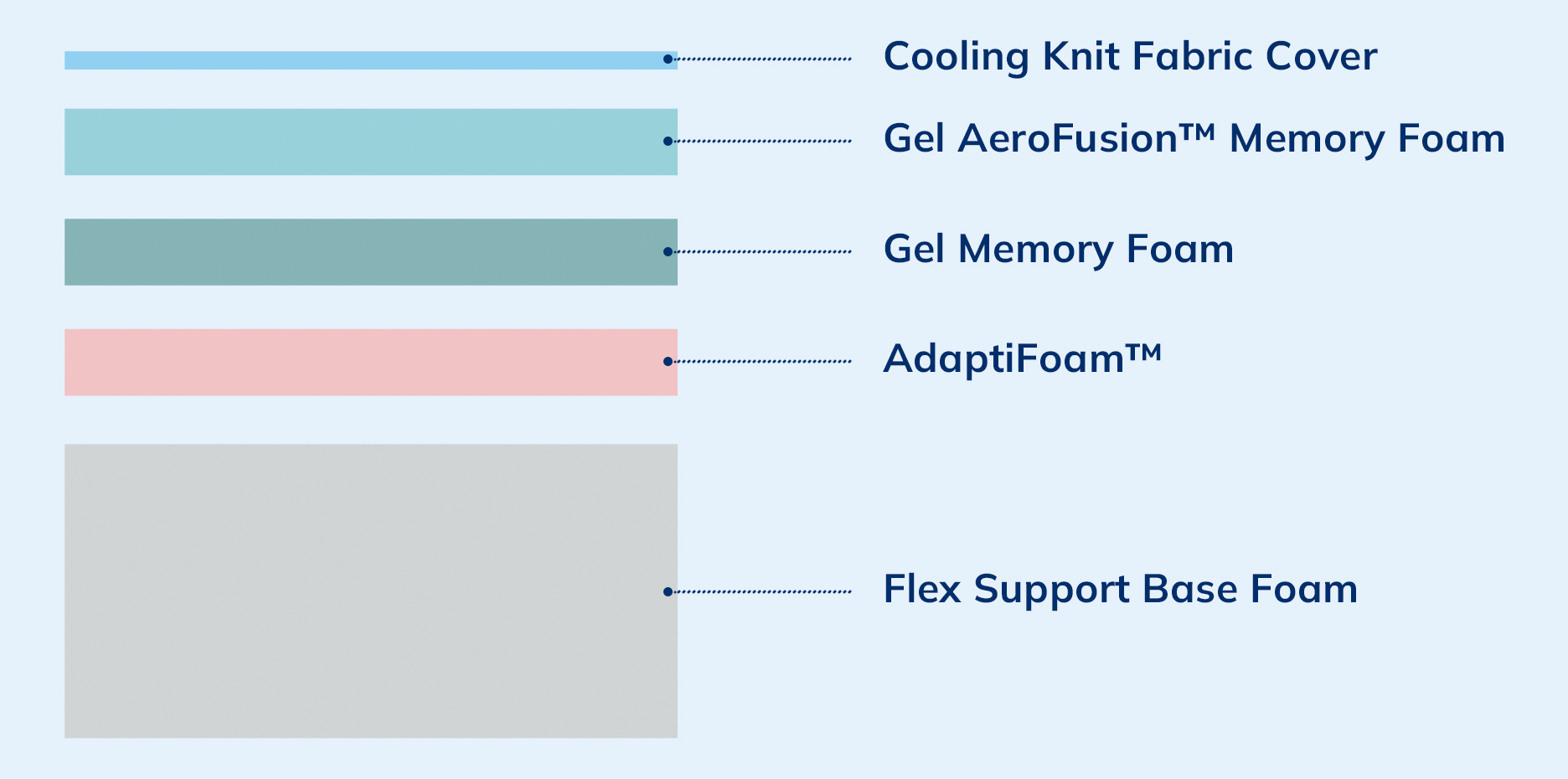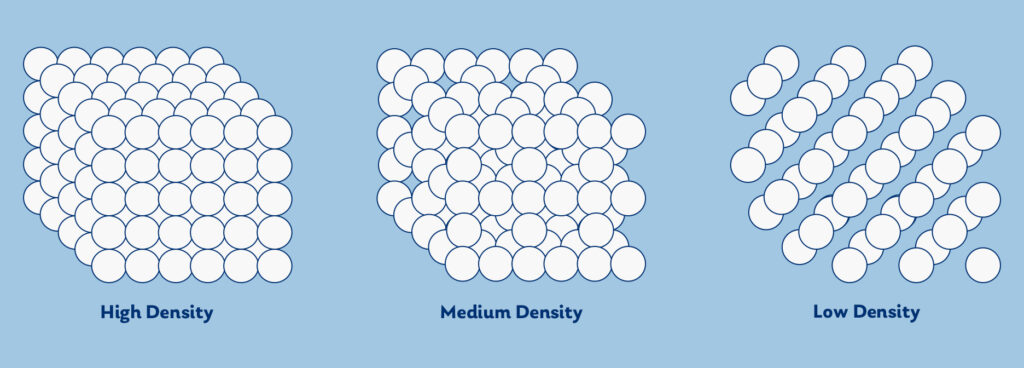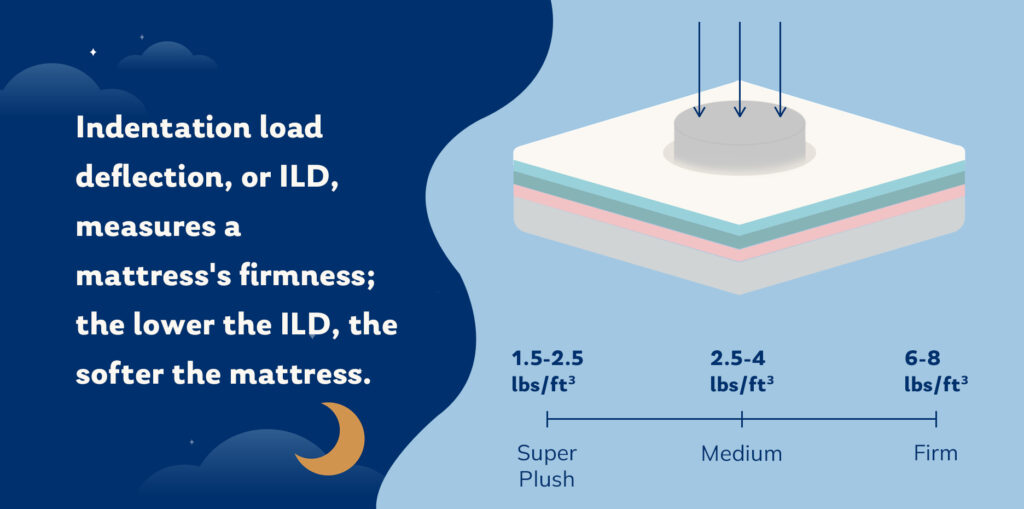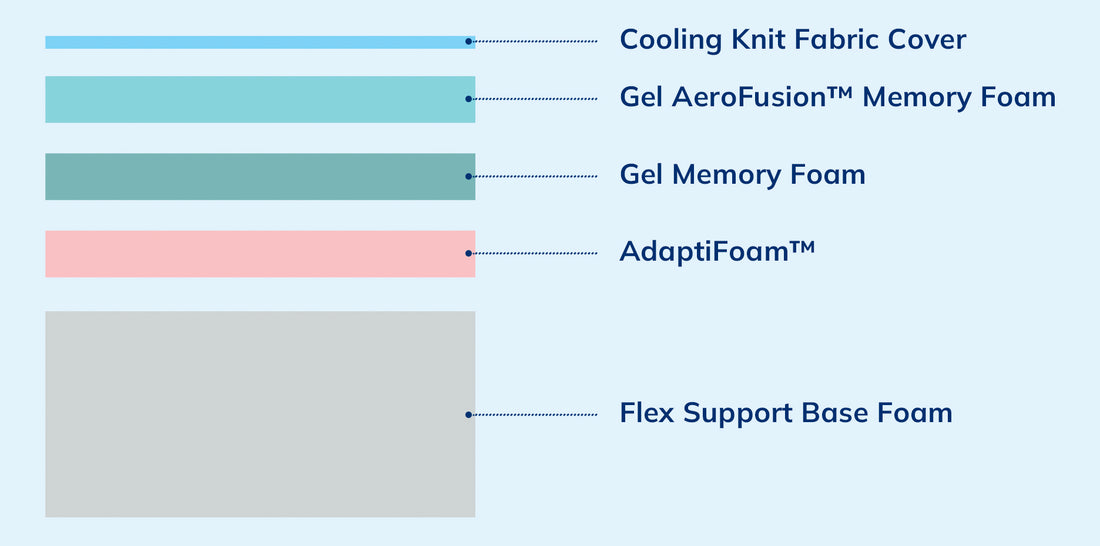
Have you ever wondered how memory foam density is determined among varying mattresses? There's a reason one memory foam mattress feels different from the next, and a lot of it comes down to its density.
Memory foam mattresses are crafted with multiple layers of different kinds of foam, but density is considered more than that. This article will explore memory foam density and its impact on sleep quality.
Understanding Memory Foam Density
Memory foam density is determined by the total weight in pounds per cubic foot (PCF). This offers a visual number that people can reference for how dense the foam is, providing an idea of the mattress's general quality.

| Material | High Density | Medium Density | Low Density |
| Memory Foam | Over 5 PCF | 3 to 5 PCF | Under 3 PCF |
| Polyfoam | Over 1.7 PCF | 1.5 to 1.7 PCF | Under 1.5 PCF |
A breakdown of foam density ratings
When selecting a memory foam mattress, knowing how different foam densities are rated is helpful. The rating is not just based on how soft or hard the foam feels to the touch. The distinctions are also straightforward and can simplify finding the best mattress.
Low density
Coming with a rating of 3 or below, low-density mattresses are known to be a softer and more affordable option, among others. Low-density foam compresses easily and may not provide enough support long-term.
Mainly ideal for guest bedrooms or temporary sleeping situations, long-term use of low-density memory foam can lead to a less-than-desirable sleep quality. Unfortunately, they aren’t ideal for durability or pressure point relief. Aside from that, its affordability makes it a great alternative when camping or even traveling in an RV.
These types of memory foam mattresses are also great for young children. Their body weight likely won't put much wear and tear on the bed's materials, and it adds more than enough support for years to come.
Medium density
Memory foam beds rated 3 to 5 fall in the medium-density category. Featuring a firmness that provides a nice middle ground, it's an excellent choice for sleepers who don't like beds that are too soft or overly firm. These provide a balance of contouring and support for most average-weight sleepers.
High density
Any foam mattress with a rating of 5 or more is considered high-density. These offer enhanced support and durability and excellent relief for pressure points. With proper care over time, high-density foam mattresses can last decades
When an individual sleeps on a high-density mattress for the first time, it may feel overly firm. This is a common experience, as the memory foam bed will eventually conform to your body with repeated use. High-density foam is best suited for individuals with a larger build, and those prefer minimal impressions. It is a great option for people who want a firm, supportive sleeping surface.
Why memory foam density matters
When searching for a new memory foam mattress, density is a primary factor in comfort, support, and durability. Here are some of the top reasons you should always consider density.
Firmness level

The Indentation Load Deflection (ILD) measures firmness in a foam mattress. The ILD of a foam bed can be determined by compressing a sample piece to 1/4 of its total thickness measurement. If a mattress comes out with a higher ILD, it'll likely be categorized as a firm or high-density mattress.
Impression response
Regardless of the density range, you're bound to put some impression on your mattress every time you sleep. Lower-density foam mattresses will bounce back to their original form faster after impressions. High-density resists impressions but takes longer to rebound when compressed.
Support
Heavier individuals do better with a high-density mattress as this provides the ongoing support they need throughout the night. This also means the bed will be able to support changing sleeping positions without compromising on the structure of the mattress.
Lighter individuals can appreciate a broader spectrum but are generally better suited with a lower-density foam mattress, as they don't encounter as many struggles with body impressions.
Durability
When considering longevity, remember that high-density foam is built to hold up better against impressions and sagging over time. Density has a direct correlation to the general lifespan of a memory foam mattress.
How to choose the right foam mattress for you
While memory foam density can affect a mattress's overall firmness, it isn't the all-deciding factor. Multiple aspects of a foam mattress's construction play into its firmness rating. Considering the firmness rating is important, but there are other angles to discern which foam mattress is right for you.
Sleeping positions
Most people tend to sleep on a particular side of their body. Although they may toss and turn throughout the night, some sleeping positions face the mattress more than others. The following list highlights the best foam densities for different sleeping positions.
- Side: Memory foam mattresses are known to relieve pressure points and conform to the body's natural curves, making them an excellent choice for side sleepers. Lower to medium-density foams are best for side sleepers.
- Stomach: Ensuring proper body alignment should be the primary concern for individuals who sleep on their stomachs. Consider investing in a high-density memory foam mattress to avoid health complications from sleeping on your stomach.
- Toss and Turn: A medium-density foam is the best option for those who change sleeping positions frequently throughout the night as it provides both comfort and support for all sleeping positions.
- Back: Back sleepers should consider body weight when choosing a foam mattress. Light sleepers need low density for ample support, while heavier individuals benefit from high density.
No matter how you break it down, the quality of sleep you get heavily reflects the quality of the mattress you buy. Although the price tag doesn't always guarantee better quality, it's essential to consider the material and manufacturing standards as they can significantly impact the overall quality of a product.
With a diverse collection of memory foam mattresses, MLILY is known to have something for every budget, body type, and sleeping preference. Popular choices include the Mprove 2.0, ONYX Max Hybrid Plush, and the PowerCool Medium Sleep System. Each of these serves a broad demographic of sleepers.
Final thoughts
If you need help deciding which density of memory foam to choose, it's best to go with a medium-density foam mattress. This covers the broadest range of sleeping preferences, while low and high density is best for more niche demographics. In conclusion, we hope this article serves as a concise and practical guide for readers seeking the best memory foam mattress for a peaceful and restful night's sleep.
